UNESCO:International Mother Language Day February 21, 2019
Posted by OromianEconomist in Uncategorized.Tags: Afaan Oromoo, Ancient African langauge, Cushitic languages, indigenous languages, Indigenous People, Indigenous People and Language, Language and Development, Mother Tongue Day, Oromo
add a comment

‘Multilingual and multicultural societies exist through their languages which transmit and preserve traditional knowledge and cultures in a sustainable way.’ #IndigenousLanguages #MotherTongueDay #AfaanOromoo #Oromia #Oromo #Africa #Languages #culture
International Mother Language Day
The idea to celebrate International Mother Language Day was the initiative of Bangladesh. It was approved at the 1999 UNESCO General Conference and has been observed throughout the world since 2000.
UNESCO believes in the importance of cultural and linguistic diversity for sustainable societies. It is within its mandate for peace that it works to preserve the differences in cultures and languages that foster tolerance and respect for others.
Linguistic diversity(link is external) is increasingly threatened as more and more languages disappear. Globally 40 per cent of the population does not have access to an education in a language they speak or understand. Nevertheless, progress is being made in mother tongue-based multilingual education with growing understanding of its importance, particularly in early schooling, and more commitment to its development in public life.
Multilingual and multicultural societies exist through their languages which transmit and preserve traditional knowledge and cultures in a sustainable way.
MESSAGE FROM THE DIRECTOR-GENERAL
“Indigenous peoples have always expressed their desire for education in their own languages, as set out in the United Nations Declaration on the Rights of Indigenous Peoples. Since 2019 is the International Year of Indigenous Languages, the theme of this year’s International Mother Language Day will be indigenous languages as a factor in development, peace and reconciliation.
Indigenous peoples number some 370 million and their languages account for the majority of the approximately 7,000 living languages on Earth. Many indigenous peoples continue to suffer from marginalization, discrimination and extreme poverty, and are the victims of human-rights violations (…). On this International Mother Language Day, I thus invite all UNESCO Member States, our partners and education stakeholders to recognize and enforce the rights of indigenous peoples.”
— Audrey Azoulay, Director-General of UNESCO, on the occasion of International Mother Language Day
QZ: We’d have a better chance of preserving Africa’s dying languages if we learned their history June 14, 2017
Posted by OromianEconomist in Uncategorized.Tags: Afaan Oromo Kushitic Kemetic language, Afaan Oromoo, Africa, African languages, Indigenous People and Language, Oromo, QZ
add a comment
We’d have a better chance of preserving Africa’s dying languages if we learned their history
By Abdi Latif Dahir, Quartz Africa
‘Across the world, African languages are slowly taking the center stage and are being recognized for their importance. For instance, you can now learn Zulu on an app, read a growing list of articles in African languages on Wikipedia, and receive thousands of dollars in awards for your fictional Swahili piece or poem. And many universities from Ethiopia to South Africa are making African languages like Afan Oromo and isiXhosa a compulsory subject. But Africa still has some of the world’s highest concentration of at-risk languages. And that can be reversed by first understanding and studying the past history, present evolution, and future use of these languages.’ Click here to read the full article QZ.
UNPO: Oromo: Alterations of Afan Alphabet Raise Concerns About Community’s Cultural Rights June 10, 2017
Posted by OromianEconomist in Uncategorized.Tags: #ABCDeebisaa, Africa, African languages, cultural genocide, Cushitic languages, Indigenous People, Indigenous People and Language, Oromia, Oromo, Oromo language, Qubee, Qubee Afaan Oromoo, Qubee koo, Tartiiba qubee jijiiruun fumaata hin ta'u, UNPO
2 comments
#ABCDeebisaa
Oromo: Alterations of Afan Alphabet Raise Concerns About Community’s Cultural Rights
UNPO, 9 June 2017

Photo courtesy of USAID Ethiopia@flickr
Authorities in Oromia changed the order of the Roman alphabet used for the Afan Oromo language on the grounds that the old alphabet order is allegedly an obstacle to the reading skills of Oromo school children. According to Oromo intellectuals, however, this change is aiming at diminishing the cultural rights of the Oromo people who have been subject to a marginalisation process for years. This issue is occupying the center of Ethiopia’s political news cycle, even though this regulation had been silently carried out in 2016. Therefore, there are doubts as to whether the regime uses this debate to divert public attention from large-scale Oromo protests. In the past months, the Ethiopian government has been in the world’s spotlight due to massive human rights violations in the country.
This article has been published by Global Voices
Authorities in Oromia, Ethiopia’s largest state, have infuriated language experts and Oromo nationalists with their decision to re-arrange the order of the alphabet of the region’s language, Afan Oromo.
In multilingual and multiethnic Ethiopia, orthographic choices are complex linguistic and political decisions that have great socio-political consequences.
Among Ethiopia’s written languages, most write their language in either the Ge’ez or Ethiopic alphabet, known as “Fidel,” or the Roman alphabet. Afan Oromo officially adopted the Roman alphabet — in its usual order of ABCD and so on — after the current government come to power in 1991.
However, more than a quarter century later, the regional educational authorities of Oromia announced they were reshuffling the “Qubee Afan Oromo” (as the alphabet is called). The first seven letters are:
L A G I M Aa S
Justifying the change, authorities blamed the old alphabet order as the reason why reading skills among primary school children in Oromia remain poor. They even cited a research to back up their claim.
There is, however, a problem with their argument. It was based on a misrepresentation of the findings of the research. In fact, the research, which was funded by US Agency for International Development (USAID) in 2010, revealed a broader problem of reading skills not only among Afan Oromo-speaking primary school students, but also students whose mother tongue was Amharic, Hararigna, Sidaamu Afoo, Somali and Tigrinya.
In the study, pedagogic and logistical difficulties were identified as factors for poor reading skills in Ethiopia’s six major regions. However, the order of alphabet was not cited as a factor for the dismal reality. In a post on the citizen journalism site OPride.com, one blogger agreed with the findings of the research but questioned the connection it had to the alphabet order, writing:
There is little disagreement on the core problem here: The education quality crisis in Ethiopia needs fixing. The disagreement here though is on the proposed solutions. This is underscored by a key question that everyone is asking: JUST HOW DOES REORDERING THE AFAAN OROMO ALPHABET IMPROVE READING AND LEARNING OUTCOMES?
‘Yet another fraud perpetrated on the Oromo people’
The change actually took effect in 2016 and school textbooks already reflect the reshuffling, but it was done so quietly. So much so that the news of the letter order change only made it into Ethiopia’s political news cycle after government affiliate Oromia Broadcasting Service reported about it. Over last two years, a series of political events with far-reaching repercussions such as protests and internet outages has dominated the country’s news cycle.
As soon as the change was reported, concerned Oromo intellectuals started raising questions.
For them, this is the latest attempt in a series of steps intended to diminish the cultural rights of the Oromo people, who have historically been marginalized in Ethiopia. On Facebook Awol Kassim Allo, wrote:
“The casual change/disfiguring of the Alphabet of a language spoken by more than 40 million people without any debate and discussion is appalling. The excuse given to justify it – improving the ability of children to read at early stages of instruction – is lame and cannot stuck up to scrutiny. …This is yet another fraud perpetrated on the Oromo people and it must be rejected.”
The circumstance of the change also stoked another fear: that the decision to alter the order of the letters might be a plot by people who were disgruntled when the Oromos opted to adopt the Roman alphabet over the Ge’ez alphabet in 1991.
Prior to 1991, Afan Oromo was written in different alphabets. The first Oromo Bible was printed in Ge’ez letters in the 19th century. During the reign of emperor Haile Selassie (1930-1974), Afan Oromo was not a written language.
When Ethiopia’s military regime came to power in 1974, it decreed that all Ethiopian languages must be written exclusively in Ge’ez alphabet— a draconian policy intended to promote unity among Ethiopia’s diverse ethnic groups.
Parallel to the Ge’ez letters, however, Oromo language experts and Oromo nationalists were also using the Roman alphabet. Paul Baxter, a social anthropologist, wrote that the Roman alphabet was used to transcribe the Afan Oromo language among Kenyan Oromos in the 1940s.
Proponents of the Ge’ez alphabet believe that Ge’ez signifies the rich liturgic and literary tradition of Ethiopia. For them, preserving Ge’ez in the age of the Roman alphabet’s domination is a sign of resistance to cultural globalization and a symbol of identity. Responding to Awol Kassim Allo’s post on Facebook, Abeba Teshale wrote:
“Simple, structured, logical, Ethiopian, African, Amharic/Tigregna alphabet is there for any one interested to adopt. 26 vs 338 syllables! There is an alphabet for each sound and for the ones that don’t have one, we could crate a symbole. Just a thought”
For many Oromos, though, adopting the Roman alphabet is a matter of selecting an alphabet that best fits the Afan Oromo sound system.
According to academic Teferi Degeneh Bijiga, who wrote his doctoral dissertation on the topic of Afan Oromo writing system, complex historical, cultural and linguistic forces were at play when Oromo intellectuals decided to adopt the Roman alphabet in 1991.
Over the next few weeks, this issue will be front and center in Ethiopian politics, where the Ethiopian government is operating under a state of emergency because of the protests that began over land use as well as political and economic marginalization in Oromia in November 2015.
Oromia: Tartiiba qubee jijiiruun fumaata hin ta’u. #ABCDeebisaa #OromoProtests June 6, 2017
Posted by OromianEconomist in #ABCDeebisaa, #OromoProtests, Uncategorized.Tags: #ABCDeebisaa, #OromoProtests, Afaan Oromo Kushitic Kemetic language, Afaan Oromoo, Africa, Indigenous People and Language, Oromia, Oromo, SAY NO, Tartiiba qubee jijiiruun fumaata hin ta'u
add a comment
“Early grade reading: The incompetent Ethiopian government has once again to demonstrate its prejudice against the Oromo people. It was supposed to help puples overcome their deteriorating reading skill with US provided fund. RTI (research institute) recommended raising teaching reading skill not alphabet distortion. It pointed out the need for competent teachers to teach the language and teaching aids for the kids. That is what should be improved. It recommended “particular attention to the frequency of letters and words in the language” not to start the alphabet board with those letters as pseudo experts in Sulultaa and their bosses want to convince the people. Qubee Oromo was introduced after the policy was thoroughly discussed by the then legislature. Now it is announced without telling the form of decision making it followed. This is a package that the Oromo people won by their struggle that costed so much sweat and blood. It cannot be taken away without costing the same amount. This is harbinger of worst things to come and should not be passed in silence. People that put Oromummaa after alien interest might have collaborated in this shameful act of isolating Qubee from the long tested Latin alphabet formation. But the main assault is coming from the sinister regime and it alone has to account for it. The empire is no more the source of Oromo knowledges and to meddle with Qubee at one center cannot stop its flourishing and getting desiminated from another center. Oromo have to learn from their Wala’ita neighbors of the past years, when they rose in 1998 against “Wedagogda” Qubee that was meant to distort their identity. Qubee can be acceptable only in the form adopted by the Oromoo.”-Ibsaa Gutamaa
The Qube Saga: Another Attack on the Oromo People
Abdii Boruu:- Tartiiba Qubee Afaan Oromoo jijjiiruun waan boba’aa jirurratti boba’aa dabaluu dha
“Qubeen siidaa injifannoo Oromoo ti!” Ezekiel Gebissa
Toltu Tufa, Barreessituu kitaabban Dabballee akkana jette:-
“Qubeen Afaan Oromoo ar’a ittiin fayyadamnu argamuu kan danda’e ijibbaata hayyoonni Oromoo yeroo dheeraaf godhan irraahi. Akkasumas warraaqsi quddina afaanii bara dheeraaf hayyootaa godhamaa turuun isaa ni beekama. Itti fufuudhaan, Sadaasa 3 bara 1991 magaala gudditti Oromiyaa Finfinnee keessatti Afaan Oromoo afaan hujii, barnoota fi mana murtii ta’ee akka tajaajilu seeran labsame jira. Labsa guyyaa seena qabeessa kana irratti NAMOONNI 1000+ ta’an argatan. Labsa kana irratti maan guddoota, hayyoota, dargaggootaa fi bakka bu’ootni dhaabilee Oromoo gara garaa qooda fudhatanii jiru. …Amma, harka namni kudhan qofaatiin, tattaaffii namni 1000 ol kan heera fi seeran dalagame diiguudhaaf ka’anii jiru. Ummanni kanneen karaa #OromoProtests akka irraa haa bannuuf jechu dubbii kana oofuu eegalan.#OldTricks #TimeWasters.”
OPride: The Qubee Afaan Oromo fiasco: What We Know and What We Don’t Know
OMN- Jijjiiramuu Tartiiba Qubee Ilaalchisee Marii 2ffaa (LIVE)
Oromo children’s books keep once-banned Ethiopian language alive February 18, 2016
Posted by OromianEconomist in Afaan Oromoo, Afaan Publication.Tags: Afaan Oromoo, Afaan publication, Africa, Cushitic languages, Indigenous People and Language, Language and Development, Oromia, Oromo, Oromo children's books keep once-banned Ethiopian language alive, The Guardian, Toltu Tufa
add a comment


Oromo children’s books keep once-banned Ethiopian language alive
Melbourne woman Toltu Tufa launches publishing company to print teaching resources for Oromo, a language forbidden under Haile Selassie
Melissa Davey, The Guardian, 13 February 2016
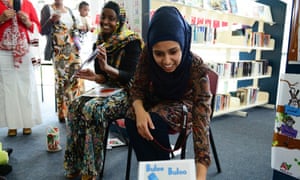
Tufa’s father is from Ethiopia where Amharic, not Oromo, is the national language. Her mother was born in Turkey but moved to Australia when she was four, and it was here her parents met.
‘Stop the killing!’: farmland development scheme sparks fatal clashes in Ethiopia
Read more
Tufa grew up learning English, Arabic and Turkish but, for reasons Tufa couldn’t fathom at the time, her father also made sure she could speak Oromo, the fourth most spoken language in Africa.
“Dad never spoke about his life back in Ethiopia and yet he insisted on teaching us this language,” Tufa said.
“There were so many resources at my fingertips for the other languages I was learning and so many people that speak them. But when Dad was teaching us Oromo, there were no textbooks or learning materials at all. And that struck me as really strange.”
Her father wouldn’t answer her questions about it either.
“He wouldn’t talk about it and he wouldn’t tell us about his past,” Tufa said. “He would just say, ‘Just learn to speak the language. We are Oromo and this is the language we speak.’ ”
But as Tufa, who is now 30, got older and began doing her own research, she discovered why speaking about Oromo was so painful for her father.
The Oromo are the largest ethnic group of Ethiopia. But since their land was conquered and rolled into the Ethiopian empire in the 1880s, the people have suffered repression and persecution at the hands of numerous African regimes, including mass executions, mutilations and slavery.
Under the dictatorship of Haile Selassie in 1941, the Oromo language was banned, including from political life and schools, and the Amharic language and culture was forced upon the Oromo people. It was a ban that would remain until 1991, when the military Derg regime was overthrown by rebel forces.
During this time the Oromo were jailed, abused and executed. Oromo texts were destroyed. Tufa’s father, an Oromo, fled to Egypt and, in the late 1970s, he was granted asylum in Australia.
By the time the Oromo ban was lifted, Tufa’s father had established a small, private Oromo school in Melbourne to teach the language to the children of asylum seekers who had fled the Horn of Africa. As she helped to teach the students, Tufa realised the teaching resources were woeful.
“Dad imported some Oromo books from Ethiopia after the ban had lifted but they were written in tiny print and had these crude black-and-white drawings,” she said.
“Many of the previous education materials were destroyed during the ban and the republishing of books was all managed by the government, who didn’t consult with Oromo speakers and qualified people to print them, and sometimes the spelling was wrong. There was nothing for children. There wasn’t even a single Oromo alphabet poster in Ethiopia.”
Ethiopia scraps Addis Ababa ‘master plan’ after protests kill 140
Read more
Tufa decided to create posters and worksheets for her father’s students, using her own money to get them printed. One of the first things she produced was a series of alphabet posters.
“The first thing I made that I showed to my dad was a poster I made for the Oromo letter ‘A’,” she said.
“He just cried and cried. He was sobbing. He wasn’t really anticipating me doing this. And he said to me, ‘It’s the most beautiful thing I’ve ever seen.’”
Three other small Oromo schools that had opened in Victoria by then heard about the materials and all of them wanted copies. Tufa realised that if there was a demand for Oromo child education materials in Australia, there must be other communities around the world where resources were also needed. She booked a plane ticket and travelled to nine different countries to find them.
“I was born and raised in Australia, so I’m very privileged compared to a lot of brown people and I didn’t go through what a lot of Oromo people went through,” Tufa said. “So I thought, rather than trying to claim these Oromo materials as my own, I needed to talk to people and show them my blueprints and get their feedback. I interviewed children, adults and new Oromo migrants in places like Kenya, Norway, Germany and the US, and I videoed a lot of the feedback as well.”
The response was overwhelming, she said. Word of her project spread and, when she returned to Australia, she launched a crowdfunding campaign so she could print Oromo learning materials and send them back to the communities she had visited. By the end of 2014, in just six weeks, she had raised almost $125,000.
“I couldn’t believe it,” Tufa said. “People began writing to me from around the world, these emotional and long letters about how they were punished and jailed for speaking their own language. One man gave me $10,000 from his retirement savings, saying ‘They tried to kill me, but they didn’t. I want to leave something in my legacy for other refugees like me.’”
Last year, Tufa flew to the communities that had supported her projects most to thank them and provide them with children’s books and posters. Even Oromo speakers who had no money helped her, she said, by editing her books and offering feedback.
While her market is all over the world, the largest Oromo community outside Africa is in the US state of Minnesota, she said. Her resources have also found their way to Ethiopia, with people sending copies to family members who still live there. This year, she plans to launch an online store for her publishing company, Afaan Publications.
Demand is also solid in Australia. According to the latest available census data, the top ancestry responses that Ethiopia-born people reported were Ethiopian (5,297 people), followed by Oromo (821 people).
Meanwhile, the troubles for Oromo people in Ethiopia are far from over. The current government has announced an urban planning strategy that aims to expand the capital, Addis Ababa, by occupying surrounding Oromo towns and land in Oromiya, the largest and most populous state in Ethiopia. The move would require closing Oromo schools and occupying homes to make way for infrastructure.
In November, people, predominantly students, from 100 towns of the Oromiya region began protesting the move, with the government reacting by killing, maiming and imprisoning them. A series of violent clashes between protesters and the government left the country reeling.
Last month, after 140 lives were estimated to have been lost in the protests, the Ethiopian government announced it would scrap the land expansion project. But protesters and activists feel it is too little too late and there is continuing unrest.
“I had planned to take my children’s books to Oromiya this year but I just don’t think it’s safe to do so at the moment,” Tufa said. “The Oromo in Ethiopia are still trying to find their way.”
* Tufa’s father, who frequently travels to Ethiopia, could not be named in this story for his own protection.
Related:-
Children’s books breathe new life into Oromo language
The first publishing company to print children’s books in the Oromo language, which is spoken in parts of Ethiopia, Kenya and Somalia, has been launched.
The Oromo language fell out of favour in Ethiopia under the rule of Haile Selassie, with the Amharic language and culture being favoured.
It is the fourth most widely spoken language of Africa (after Arabic, Hausa, and Swahili).
Toltu Tufa learnt Oromo from her father as she grew up in Australia. She explained to Newsday why it was important to her to create the children’s books.
Oromo Represented at International Indigenous Terra Madre-2015 in Shillong, capital and hill station of Meghalaya, India November 8, 2015
Posted by OromianEconomist in Uncategorized.Tags: Africa, Indigenous People, Indigenous People and Language, Oromia, Oromo, Oromo Represented at International Indigenous Terra Madre-2015 in Shillong
add a comment
Oromo Represented at International Indigenous Terra Madre-2015 in Shillong, capital and hill station of Meghalaya, India
Oromo representatives from Oromia (Ethiopia) and Kenya among the cultural crew showcasing their ingenious heritages on the international event.
International Indigenous Terra Madre-2015 (an international gathering of indigenous cultural communities organized by Indigenous Partnership) started in Shillong University, India. It brings over a 100 national groups and tribes from 58 countries across the world-already kicked off on 3rd November 2015 in Shillong, Meghalaya, India. The event will run till 7th of November 2015. Oromo representatives from Ethiopia and Kenya among the cultural crew showcasing their ingenious heritages on the international event.
600 International Delegates at Indigenous Terra Madre 2015, Including Ethiopian Tribes and Communities
23 Oct 15
Representatives of Ethiopian tribes and communities will contribute to the event by sharing their knowledge and experiences
A large delegation of representatives of indigenous communities from the Slow Food Terra Madre network and beyond will be participating in Indigenous Terra Madre (ITM 2015), which will take place from November 3 to 7, 2015 in Shillong (Meghalaya, India). The event is the result of a collaboration between Slow Food, the Indigenous Partnership for Agrobiodiversity and Food Sovereignty (Indigenous Partnership) and the North East Slow Food and Agrobiodiversity Society(NESFAS).
International representatives will be coming to the event from five continents, from 14 Africancountries, 17 Asian countries, 8 European countries, 12 American countries and 7 Oceaniancountries.
Representatives from several Ethiopian communities will be attending:
– the Konso community (south-central Ethiopia). The origins of Konso culture are intertwined with the domestication of the moringa tree and its introduction in the highlands. Moringa leaves have joined the Slow Food Ark of Taste. The trees provide shade for coffee, the most valuable cash crop in the highlands. In fact the association of the two plants, moringa and coffee, exists only in the Konso area as it is a specific cultural expression of the deep link between the Konso and their ecosystem.
– the Hor tribe (southwest Ethiopia, north of Lake Stephanie Basi). An agro-pastoral community with a population of 6,000, mainly pastoralists and fishers. They plant different type of sorghum and raise sheep, goats and cattle, acting as custodians of rare local varieties.
– the Guji-Oromo community (Guji zone in the Oromia region). They are among the indigenous Oromo tribes sharing borders with the Sidama, Gedeo and other ethnic groups in southeastern part of the country. The Guji people are pastoralists in lowland areas and farmers in the highlands. In the highlands they produce honey, coffee, cereals and other crops, whereas in lowland they raise camels, sheep, goat and cattle. They govern themselves using the Gada system.
– the Gedeo community (southern Ethiopia between the Sidama and Boran zone of the Oromia region). They are sedentary cultivators, focusing on a food crop, ensete (Ethiopian banana), and a cash crop, coffee. They are unique among the ensete-growing peoples, as they plant the ensete, elsewhere largely a homestead crop, in the fields. They are the only people to intercrop their ensete with coffee. The Gedeo are also renowned for their conservation of natural resources. Using ensete, the Gedeo are able to produce food, livestock feed and wood from the same plot.
– the Hadiya community. Mainly shifting cultivators.
– the Gamo community. They are agro-pastoralist people and grow cereals, root crops and livestock on a mountain landscape.
Representatives of several groups and organizations from Ethiopia will also attend the event, including the Woyera-Moringa Suppliers Association (a cooperative which unites mostly female members of the Konso community who work with moringa leaves); the Baaboo (a local NGO which focuses on ensete development—planting, processing, and marketing—and on Gedeo ensete cuisines; the Tena Agar Traditional Foods and Utensils Protection and Promotion Association (established in 2011, it studies, documents, promotes and supports the production, preparation, supply and distribution of traditional foods and drinks and their utensils); the Daanchee Gedeo Ensete Cuisines Baaboo Development & Relief Association (whose mission is to promote Gedeo ensete cuisines through food shows, cultural events and its mobile kitchen) and Addis Ababa University.
You can find the program of the event here: http://bit.ly/1LWZaxh
Indigenous Terra Madre 2015 gratefully acknowledges funding support from the International Fund for Agricultural Development (IFAD), The Christensen Fund and the Government of Meghalaya. Indigenous Terra Madre 2015 is also thankful for the contributions made by Tamalpais Trust, Swift Foundation,AgroEcology Fund, Bread for the World and the Food and Agriculture Organization of the United Nations (FAO).
Terra Madre is a worldwide network, launched by Slow Food in 2004, which unites small-scale producers from 163 countries involved in the sustainable production of food. Among these, to date the Indigenous Terra Madre Network comprises 372 indigenous food communities, 41 indigenous Presidia projectsand308 indigenous Ark of Taste products. For more information:http://slowfood.com/international/149/indigenous-terra-madre-network
Discover the stories of Indigenous Peoples from around the world on Slow Food website in the ‘Indigenous Voices’ section! http://www.slowfood.com/international/food-for-thought/slow-themes/260987
For further information, please contact the Slow Food International Press Office:
Paola Nano, +39 329 8321285 p.nano@slowfood.it
Ajay Nayak, +91-9820535501 ajay@indigenousterramadre.org
Slow Food involves over a million of people dedicated to and passionate about good, clean and fair food. This includes chefs, youth, activists, farmers, fishers, experts and academics in over 158 countries; a network of around 100,000 Slow Food members linked to 1,500 local chapters worldwide (known as convivia), contributing through their membership fee, as well as the events and campaigns they organize; and over 2,500 Terra Madre food communities who practice small-scale and sustainable production of quality food around the world.
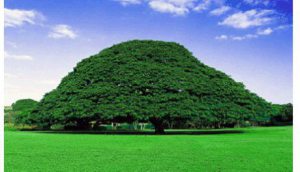
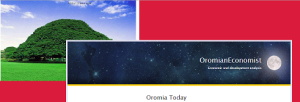

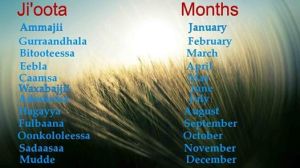


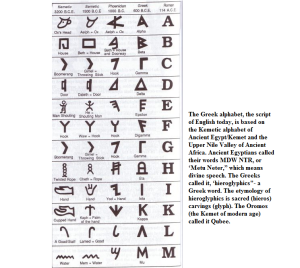
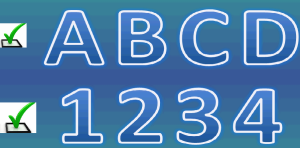








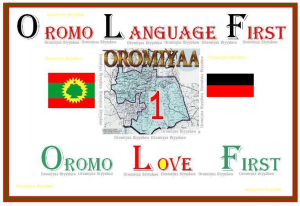

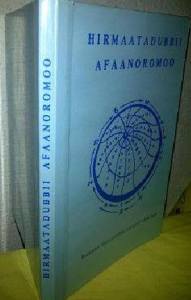



You must be logged in to post a comment.